A CCTV drainage survey is a process for examining the condition of drainage systems remotely with a camera system that records video footage and captures other useful data.
The technology has become an essential tool for inspecting and surveying underground drains, sewers, culverts and associated drainage assets safely, quickly and cost-effectively.
The techniques and equipment deployed to carry out CCTV drainage surveys can also be used to inspect above ground pipes, for example soil stacks, rainwater downpipes, industrial process pipes storage tanks, vertical chutes, and ducting systems.
What CCTV surveys are used for
- As a remote access technology, CCTV drainage surveys allow data to be gathered safely, without operatives having to carry out confined space entries, which are potentially-hazardous.
- CCTV drainage surveys are vital to planned preventative maintenance (PPM) programmes, allowing asset owners to manage costs and avoid highly-damaging drain and pipe failures.
- They are used to investigate drain and sewer problems, such as blockages, poor flow rates and pollution incidents.
- They support construction projects – by identifying drain connectivity and allowing contractors to design appropriate drainage systems that meet regulatory controls.
- CCTV surveys are used to carry out pre-adoption condition inspections – allowing building contractors to show the condition of drainage assets before they are handed over to clients.
- They are used to support planned work to carry out pipe repairs, rehabilitation and replacement.
CCTV drainage surveys and water jetting
CCTV surveys are often carried out in conjunction with the cleaning of pipes using high pressure water jetting, delivered by a jet vac tanker.
This is because a pipe may contain a significant amount of debris and material – silt, stones, tree roots, and fats, oils and grease (FOG).
If this material is not first removed, the CCTV camera may not be able to travel up the pipe or record unobstructed images of the pipe, which can later be viewed to assess its condition.
Types of CCTV drainage camera systems
Robotic crawler CCTV cameras
Drainage specialists use robotic crawler cameras to survey pipes with diameters ranging from 150mm up to 2000mm.
The cameras have powerful LED lights that allow an operator, who controls the camera from a console in a specialist CCTV survey van, to record HD-quality video footage.
These cameras are combined with a rugged body fitted with an electric motor which drives wheels that can be interchanged to take account of varying conditions in pipes.
Robotic crawler cameras often have articulating arms, swivelling and rotating camera heads, and a zoom lens. This allows features within pipes to be viewed and filmed from many different angles and distances.
Push CCTV drainage cameras
For pipes with smaller diameters, where bends in the pipe prevent robotic crawler cameras from being used, or vertical pipes, such as soil stacks, drainage engineers can use push CCTV cameras, also known as push rod cameras.
The mini cameras and supporting LED lights are located on the end of a flexible rod which is stored on a small portable reel.
A CCTV survey operative can guide the flexible rod into and along the drain or sewer, while viewing the video progress on a screen installed above the reel.
Different types of CCTV drainage surveys
Locating drain and sewer blockages
CCTV drainage cameras can be used to search for and find the cause of pipe blockages, then assess the best way to clear them. Before and after footage can be recorded as evidence that the work has been carried out and the pipe is clear and in good condition.
Drain and sewer inspections
CCTV cameras can be used to carry out quick and simple drain and sewer inspections, or asset condition surveys, as part of a PPM programme. This may not involve recording full drainage survey data or completing a full CCTV drainage survey report, which speeds up the inspection process and controls costs.
Full CCTV drainage surveys
CCTV drainage surveys allow the gathering of a range of data that a client can use to either plan urgent pipe repairs or rehabilitation, or to support a PPM programme. This includes:
- A map of the drainage system, showing all main lines and lateral connections, plus key assets such as manholes and surface water drains.
- Lengths of pipes.
- Flow directions and flow rates along pipes.
- Pipe falls – this is a measurement of the gradient along the pipe.
- Locations of pipe defects, supported by HD-quality video.
Other techniques can be used during a CCTV drainage survey to gather specialist data. These include:
- Topographical surveys
- GPS surveys
- 3D mapping
- Drain tracing using a sond
CCTV drainage survey reports
Drainage survey data is incorporated in a survey report which may be supplied via online document transfer, email or in hard copy. Video evidence is either provided via a cloud storage system, on a disc, on a hard drive.
The best and most advanced CCTV drainage survey systems use bespoke software to allow data to be complied quickly and effectively.
This controls client costs and presents data in a way that best suits the client’s needs, can be easily understood and analysed, and incorporated with other data sets as part of works planning.
What to expect from a CCTV drainage survey specialist
A CCTV drainage survey contractor should have the right expertise and equipment to carry out the type of survey required. They should also:
- Provide accreditations to show they can complete the work safely, in a timely fashion, and to a high standard.
- Demonstrate that they have access to specialist drainage services needed to ensure the CCTV survey can be completed, including jet vac tankers.
- Use the latest software systems so survey reports can be provided on time, with the right data, presented in a way that is best for clients to use.
- Where necessary, have access to specialist data gathering services, such as topographic surveys and 3D mapping.

